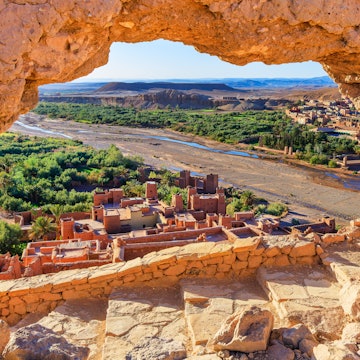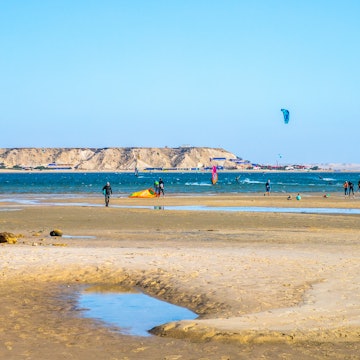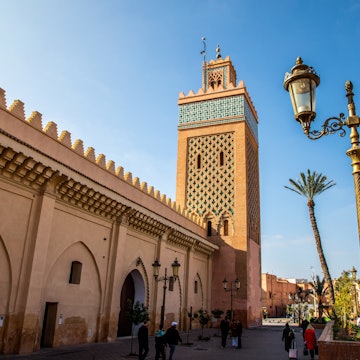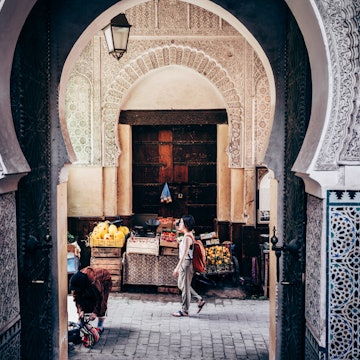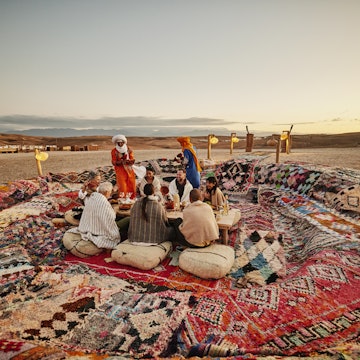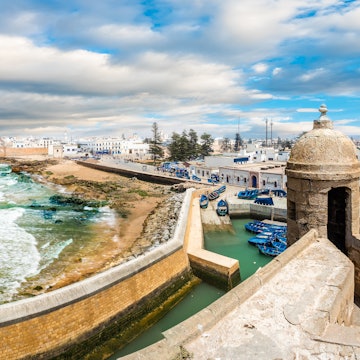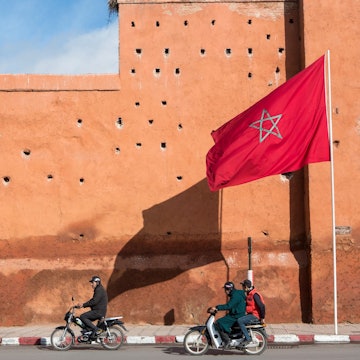

Djemaa El Fna, Morocco. arkanto/Shutterstock
Many visitors to Marrakesh spend most of their time losing themselves in the ancient medina.
This maze of narrow alleyways surrounded by red-hued walls, with Africa’s most famous square – Djemaa El Fna – at its heart, was made for walking.
To explore beyond the medina, you could take an environmentally friendly bike tour, or hop in a ubiquitous yellow petit taxi to reach the Ville Nouvelle (new town) and stroll around the accessible avenues of neighborhoods such as Gueliz and Hivernage.
Pack a pair of comfortable shoes and get ready to explore the Red City. Here are our tips for getting around in Marrakesh.
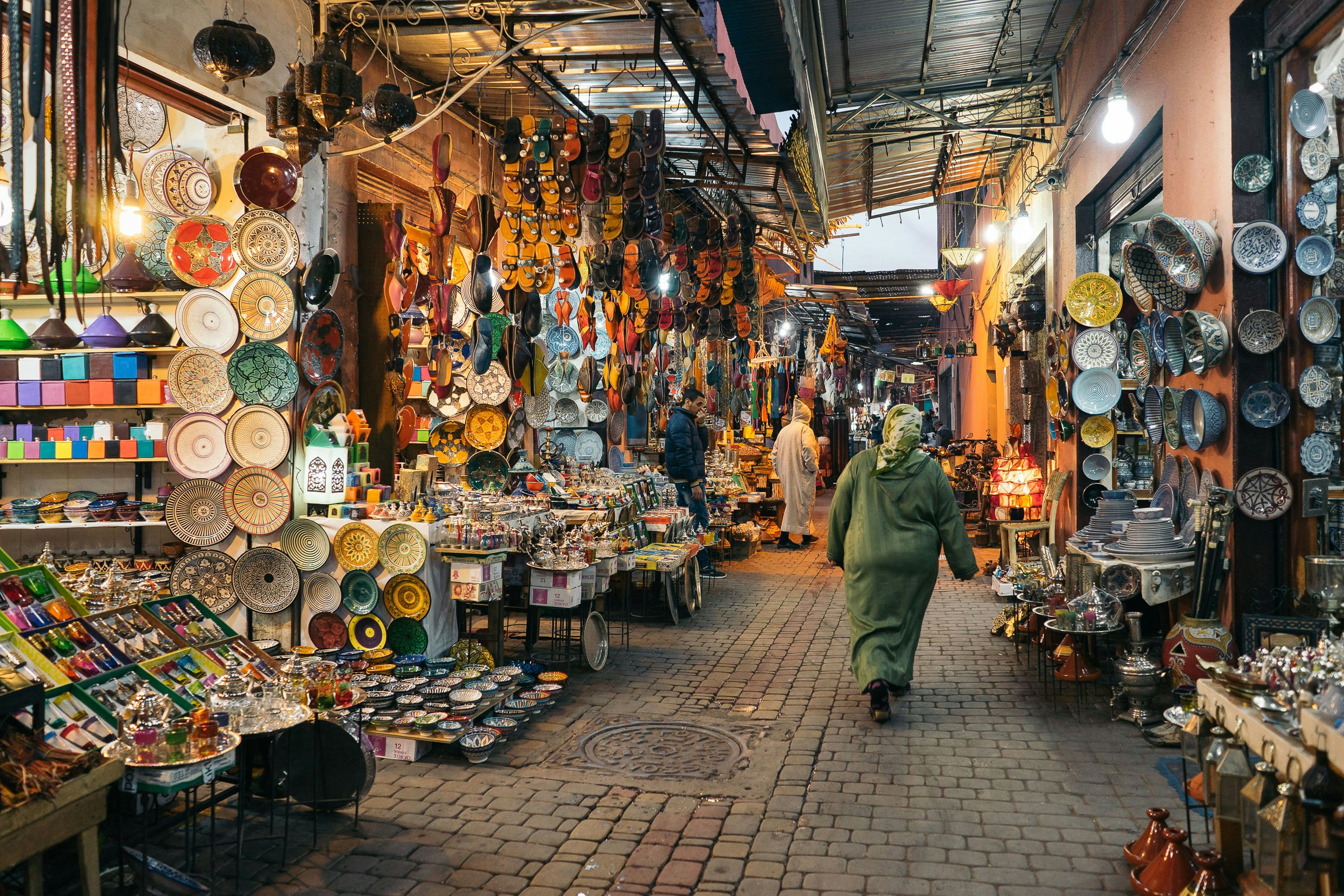
Meander around the medina
Marrakesh's medina is compact and car-free, and its jumble of skinny alleyways is made for idle wandering – discover ancient palaces showcasing Morocco’s finest decorative arts, and shop til you drop in the souqs (markets) and designer boutiques. But be sure to watch out for scooters, carts and the occasional donkey as you explore.
Download Maps.Me before you set off, but if you get lost – and you probably will – ask a shopkeeper for directions. Kids may offer to take you to your destination for a small tip.
In the Ville Nouvelle, the neighborhood of Gueliz – home to must-see sights such as the Jardin Majorelle and Musée Yves Saint Laurent – is set out with broad boulevards and spacious sidewalks lined with boutiques, galleries, restaurants and cafes. But lack of shade means pounding the pavements can get hot, especially in summer.

Join the locals in a taxi
Ride-hailing apps, such as Uber, Lyft and Careem, are not available in Marrakesh, but wallet-friendly petit taxis are everywhere. In theory, there’s no haggling or set prices as the fare is determined by the meter, but often you’ll have to insist the driver puts it on – many “forget” or claim that it’s “broken” and quote inflated tourist fares. Be prepared to haggle hard or get out of the taxi.
It’s also not unusual for the taxi to pick up other passengers going in the same direction. To avoid confusion, it can be useful to write down the name and address of your destination to show the driver. And they rarely have change, so make sure you do.
If you’re in a group or going further afield – petits taxis stay within the city limits – you can take a shared grand taxi that runs along specific routes. You can pay to take six seats if you’d like a private ride; just turn up at the taxi terminal and ask for a “place” to a specific destination.

Cycle around the city
This city’s pancake-flat terrain is bike-friendly, but you need to be a confident rider to circumnavigate the tumultuous traffic. Pikala Bikes – a tour company and social project – and AXS offer two-wheel city tours and rent out good-quality bikes and helmets.
Buses are the best budget option
Alsa runs the city buses, but they are not especially visitor-friendly and are often hot and overcrowded. But bussing is cheap; tickets cost 4 MAD and you buy them on board – have small change handy.
Line 1 connects the medina to Gueliz, and line 10 goes to the train station and Bab Doukkla for the bus station. There is a wallet-friendly airport shuttle for 30 MAD; it runs every 20 minutes between 6am and 11:30pm. And if you’ll be in Marrakesh for a while, Alsa’s Ikhlas Card gives you 17% off fares.
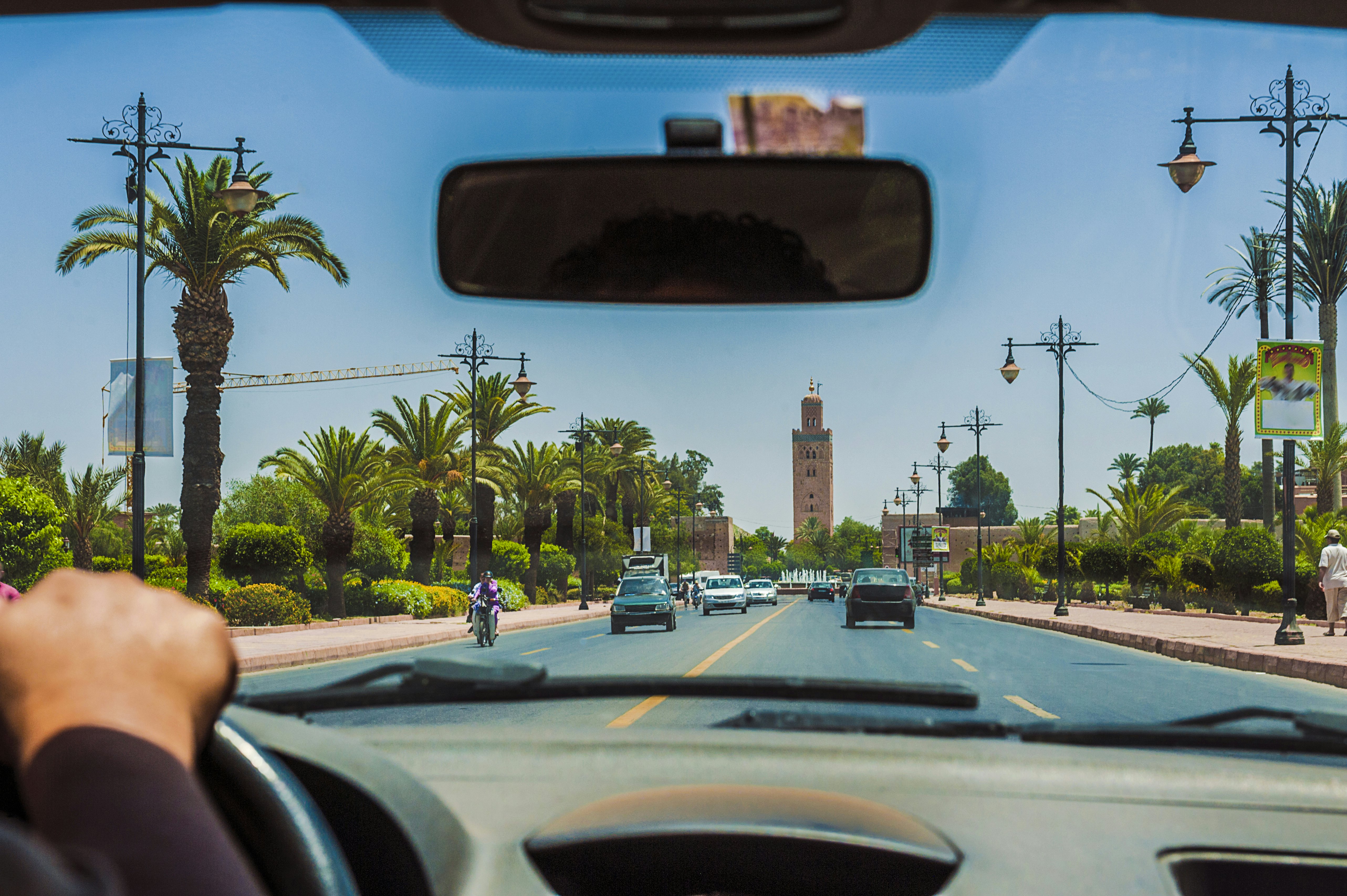
Driving around Marrakesh isn't easy
Driving in Marrakesh is not for the faint of heart. Roads can be chaotic with bumper-to-bumper traffic and drivers who weave between lanes without indicating, all to a soundtrack of honking horns. And you also have to contend with wayward pedestrians, hordes of scooters, calèches and donkey carts.
If you’re road-tripping around Morocco, pick up your rental car on your way out of the city. But if you need to park up in Marrakesh, choose accommodation with private parking, or on the outskirts of the medina or in the Gueliz neighborhood close to a public parking lot – use Waze to find your way around. Depending on the location, expect to pay around 50 MAD for 24-hour parking.
Some streets in Gueliz have pay-and-display parking meters, which cost around 2 MAD per hour, although spaces fill up quickly. If you find street parking without a meter, a parking attendant – known as a guardian – will expect around 3–5 MAD to keep an eye on your car; pay them when you leave.
There's not a lot of accessible transportation in Marrakesh
While Marrakesh has limited accessible facilities, it is not necessarily off-limits for travelers with mobility issues and a sense of adventure.
In the medina, wheelchair access can be challenging, but neighborhoods such as the high-end Hivernage and Gueliz are easier to navigate. Public buses and petits taxis are not wheelchair friendly, but grands taxis are, or arrange a private car and driver through your accommodation.
Morocco Accessible Travel specializes in accessible tours to Morocco, including Marrakesh, along with mobility equipment rental. Moroccan guide Houssaine Ichen also comes highly recommended.









